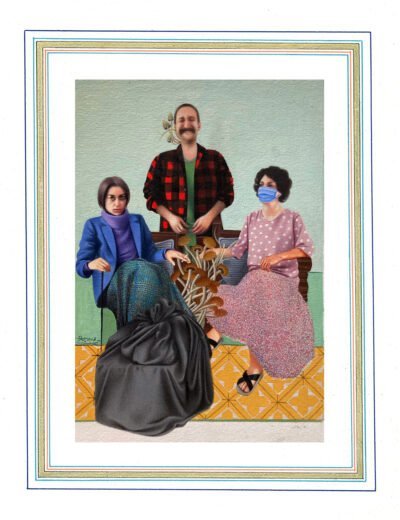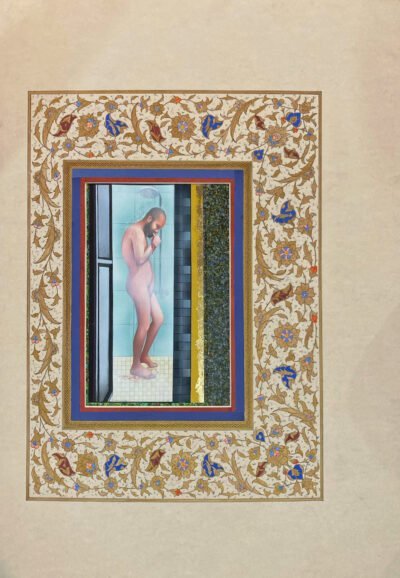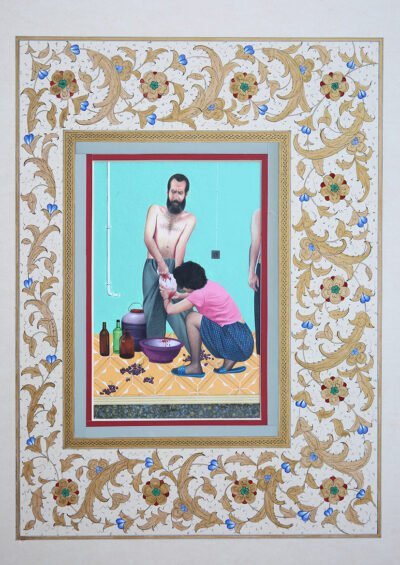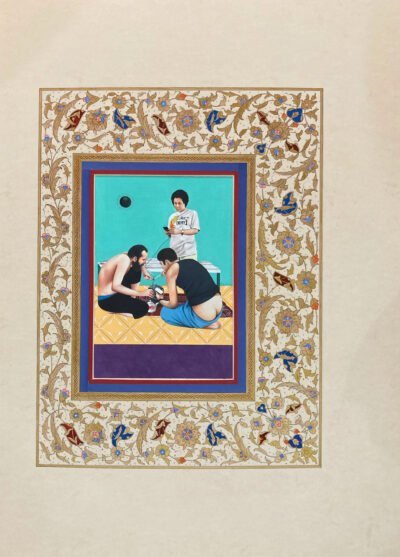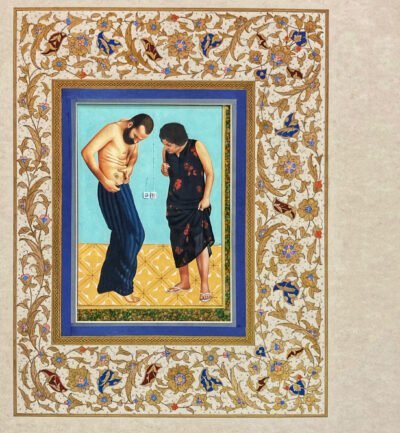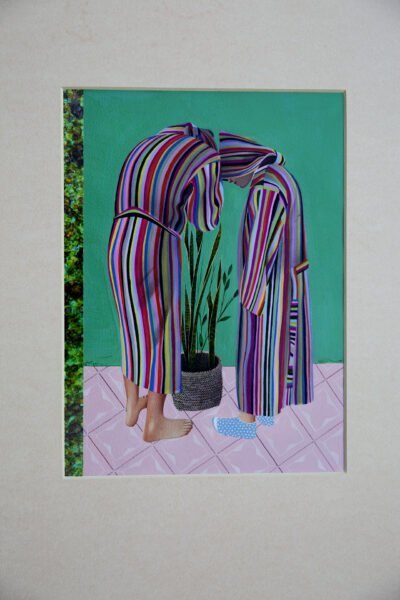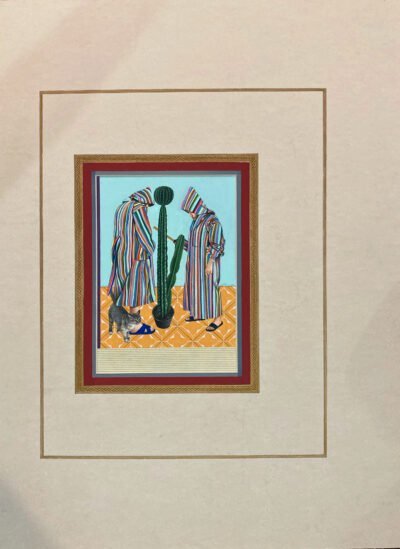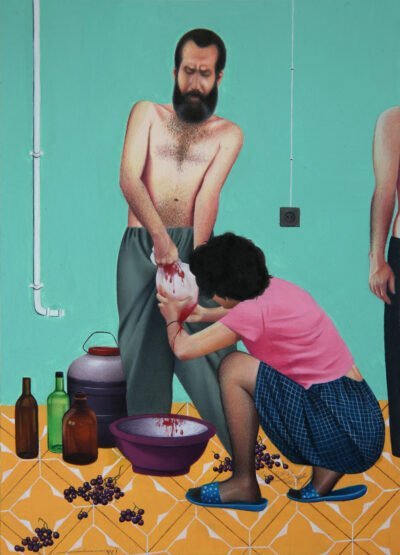The title Fall in dopamine refers to a depletion in the neural chemical that assists the brain to feel pleasure, and there is a dark mood that lingers over the artwork. The protagonists’ faces are rendered with a subtle fuzziness contrasting with the clarity of the rest of the scenes, resulting in a feeling they are desperately trying to escape the confines of their claustrophobic apartment. Since the 1979 Islamic Revolution, Iranian citizens have retreated to their homes, seeking privacy and refuge from the prying eyes of authority in the form of government officials, or even neighbours. The tight physical limits of Ayeen and Shahsavar’s painted spaces, emphasised by bare green walls and repetitive patterns of golden tiles (whose flattened perspective is at odds with the figures) mimic the confines of political and social rules in Iran, which can take their toll on the mental health of citizens. This is alluded to in the painting where a figure’s hairy leg can be seen along the edge of the scene, to the side of the couple conversing in the center. It is unclear if the limb belongs to a third person within the relationship or is an apparition.
This whiff of paranoid may be associated with drug use;
Ayeen and Shahsavar, however, insinuate it could also be a by-product of the psychological strain of living under extreme conservative conditions.
The characters in Fall in dopamine attempt to express their autonomy through illegal recreational substances: they are seen creating wine; growing cacti to produce mescaline; or revealing an eye tattoo – a popular symbol for hallucinatory magic mushrooms. In one miniature, a figure standing in the background texts on a phone and wears a T-shirt featuring Bart Simpson and the words ‘PUBLIC ENEMY NO. 1’. Bart is the poster child for the brash American attitude and the text hints at the ongoing feud between the United States and Iran. The two seated figures in the foreground smoke methamphetamine through thin pipes. Known as sheesheh, methamphetamine has transcended Iran’s class divide to become the second most used drug in the country after opium. Iran is a major link in the trafficking of illegal drugs between Asia and Europe, and the movement of methamphetamine has increased substantially over the past 10 years, often peaking when harsher sanctions are placed on Iran by the United States and its international allies.[3]
Within this painting of three friends partaking in a forbidden activity, Ayeen and Shahsavar deftly allude to larger ruptures in international diplomacy.
The artists’ depictions of the use of mind-altering substances also have rich historical precedents in Persian poetry, Sufi philosophy and the Zoroastrian faith which document the use of wine, opium and mystical potions for the easing of troubles or communicating with otherworldly forces. Ayeen and Shahsavar not only draw on these texts as inspiration but also, through their erudite miniature paintings, hope to draw attention to important Persian artistic lineages. In this way, the characters in Fall in dopamine could be viewed as mystics continuing a long tradition of accessing esoteric knowledge.
Ellie Buttrose
Endnotes
[1] WIt should be noted that the work was also criticised by official channels in Iran.
[2] For a more in-depth analysis of Misunderstanding in the blue room see Dafne Gotink, ‘Forms of power: Dissensual bodies in Iran’, Masters thesis in Arts and Culture: Art Studies, University of Amsterdam, 2016.
[3] Alexander Soderholm, ‘Iran under sanctions: Illicit drugs’, John
